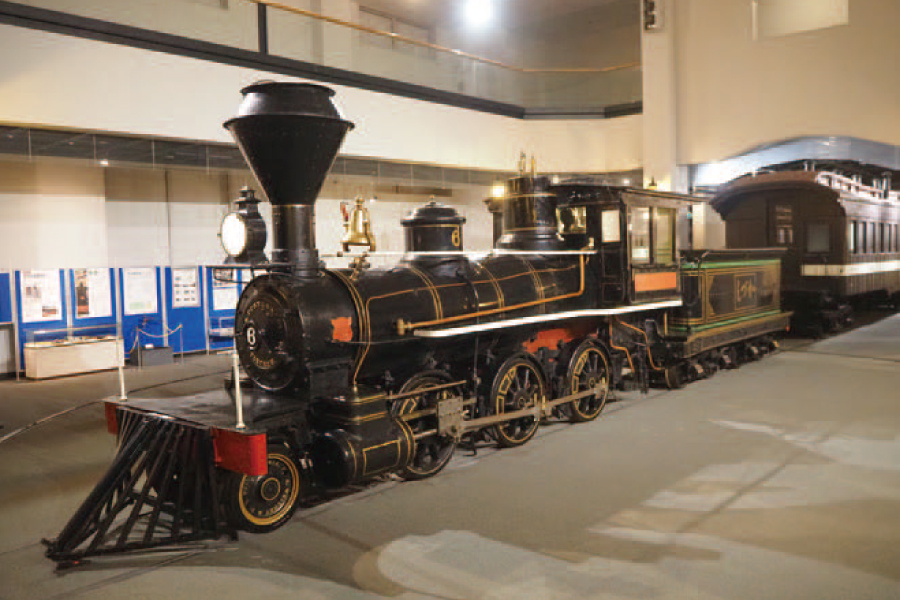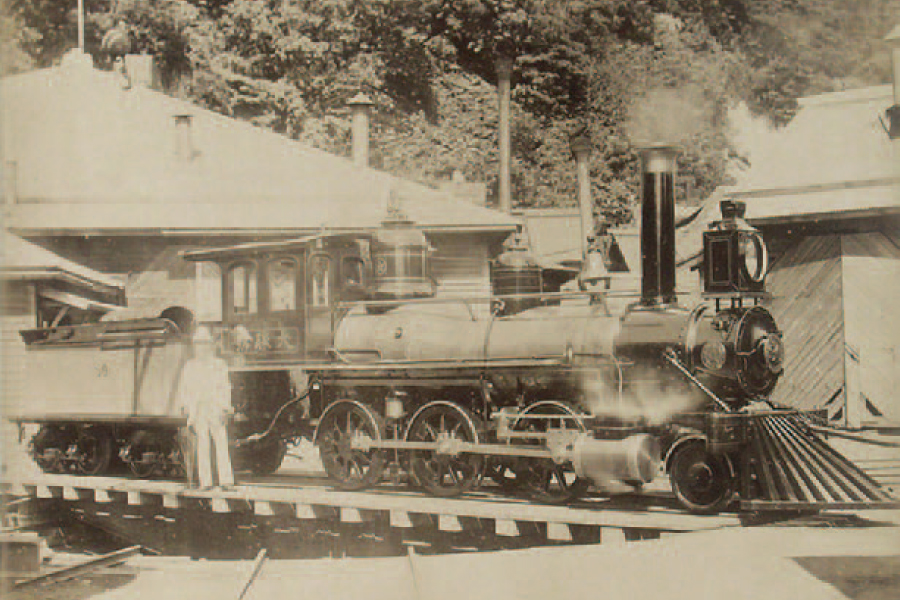
The Shizuka

The Taisho
In 1869, the Meiji government invited former samurai families and other people from around Japan to settle and help develop Hokkaido, an undertaking considered essential to Japan’s prosperity and defense. Railways contributed to the development of the vast northern island by facilitating migration and the development of agriculture and mining.
【Opening a new frontier】
The government brought in experts from the United States who had experience with similarly harsh environments to develop Japan’s “new frontier.” American railway engineer Joseph Crawford (1842–1924) established Hokkaido’s first train line between the newly opened Horonai coal mine in Horonai (present-day Mikasa) and the Temiya Coal Pier, a loading facility at Otaru Port. The first section opened in 1880 between Temiya and Sapporo, and the whole line became operational two years later.
【American technology】
Crawford ordered American-made steam locomotives for the line from H.K. Porter & Co. in Pennsylvania and passenger cars from Harlan & Hollingsworth in Delaware. The small, lightweight locomotives (16.5 tons) built by the Porter Company were ideal for Hokkaido’s early railways which used inexpensive, easy-to-lay narrow gauge rails. The first two locomotives, which arrived in Hokkaido in 1880, were named Yoshitsune and Benkei; later engines were named Hirafu, Mitsukuni, Nobuhiro, and Shizuka, all after historical figures. Shizuka, which arrived in 1885, is housed at Otaru City Museum, with other historical rolling stock.
【Shizuka (7106)】
Shizuka was the sixth steam locomotive made for the Horonai Railway in 1884. It has the classic appearance of an American locomotive of the time: an engine with a bulging chimney called a diamond stack (to prevent sparks and embers from escaping) and a wooden “cow catcher” on the front. Shizuka operated in Hokkaido until 1917.
【Taisho (7150)】
The second steam locomotive made in Japan was named Taisho, meaning “great victory.” It was modeled after American steam locomotives and manufactured at the Temiya railway works of the Hokkaido Tanko Railway in 1895. It is the oldest extant domesticmade steam locomotive in Japan and bears the red polar star that the Hokkaido Development Commission adopted as a symbol of the frontier at the time.
【The Iron Horse (Porter 4514)】
The Iron Horse is the oldest working steam locomotive in Hokkaido and was manufactured in 1909 by the Porter Company. In summer, it makes several round trips a day for passengers within the museum grounds, running along a single track with a manual turntable at each end. The museum offers a rare opportunity to see an original locomotive in operation.
【Snowplows】
Heavy snowfalls make operating trains in Hokkaido a challenge. In 1881, a snowplow was made by customizing a regular freight car with metal wedges on the front and rear. Snowplow locomotives were later imported from the United States to help clear tracks. A Russell snowplow from 1910 and a rotary snowplow manufactured in 1923 by the American Locomotive Company of New York are on display.